No, I wasn’t arrested, but I did visit Philadelphia this past February, and I did tour the Eastern State Penitentiary (ESP), a former prison, now a museum.
It’s a creepy place, and I LOVE creepy places. No wonder ESP hosts a haunted house every Halloween.
ESP makes for a unique visit for many reasons. First, the former prison’s location is unusual. It’s right in downtown Philadelphia. Imagine, as our tour guides informed us, that prisoners were able to hear people in the city celebrating during New Year’s Eve and other holidays.
Second, ESP was designed to isolate and separate inmates to encourage them to reflect on their experiences and to repent. The idea was that the prison would be a place of reflection and rehabilitation, not a place of punishment. With its vaulted sky-lit cells, the prison’s structure was designed to inspire penitence. Little did they know that the setup would drive prisoners nearly insane.
The idea began in 1790, when a “penitentiary house,” with a capacity of 16 single cells, was built in the Walnut Street Jail location in the city of Philadelphia. At that time, the experiment with day and night solitary confinement began. Many leaders believe that crime is the result of one’s environment, and theorized that solitude would make the criminal regretful. This correctional theory became known as the Pennsylvania System.
In 1821, the Philadelphia legislature approved funding to build ESP, which would house 250 inmates, and construction began in 1822. ESP’s first inmate was imprisoned in 1829, and the first female inmate was imprisoned in 1831.
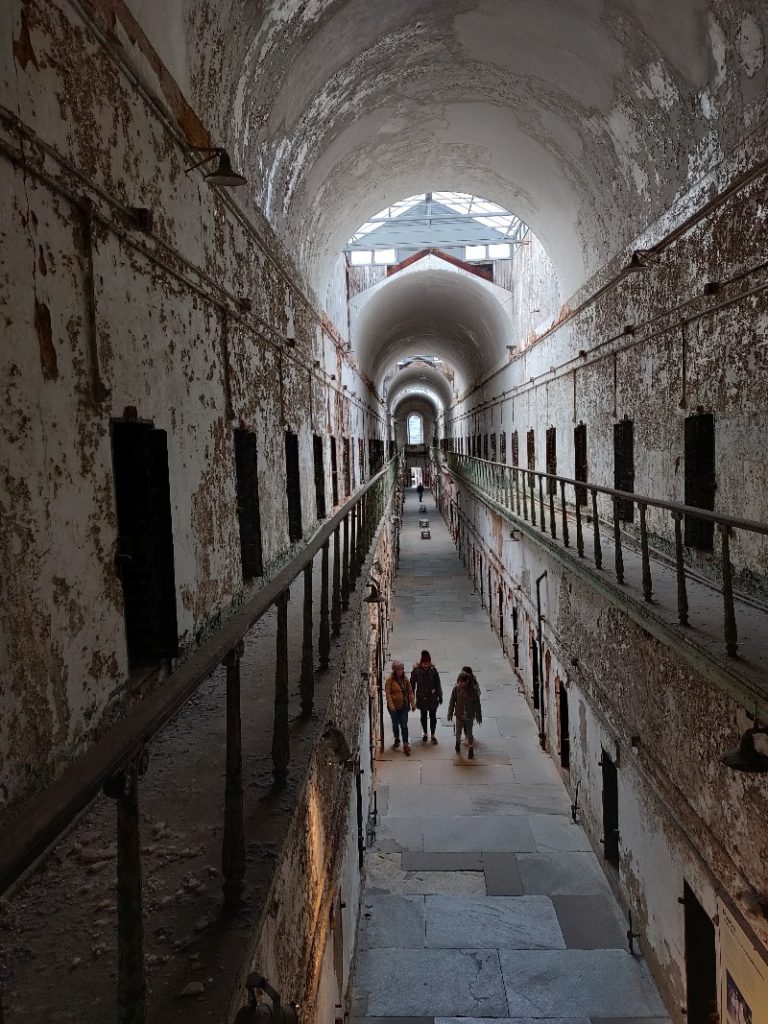
The last of ESP’s original single-story cell blocks was completed in 1831. The inmate population grew such that, eventually, two-story cell blocks were constructed.
Prisoners were confined to solitary units. Each unit had a doorway opening to the outside, where each prisoner enjoyed an approximately eight foot square patch of grass (separated from each other by stone walls), where they could have outside time about an hour each day. The prisoners were not allowed to interact with each other and had minimal contact with prison staff. They ate their meals in their cells and, if they had to be outside their cells for any reason, they wore a hood.
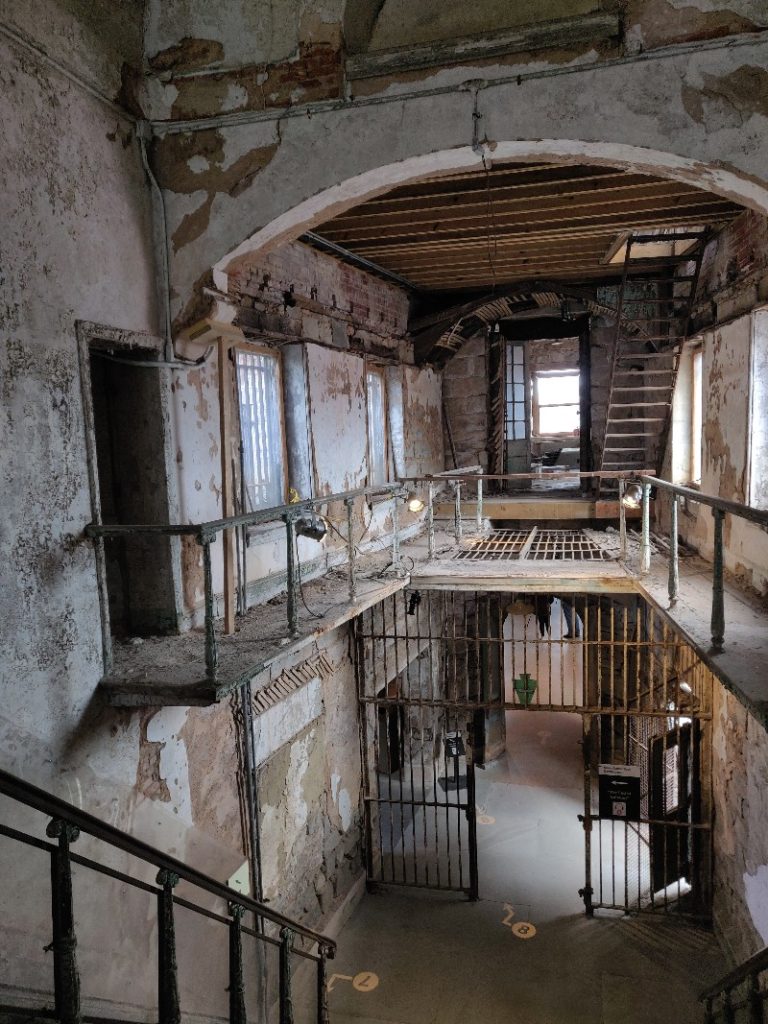
It gets worse. Prisoners were not allowed to have ANYTHING with them in their cells, tour guides told us. The only book they could have was a copy of the Bible.
Read about ESP’s famous prisoners, including including bank robber “Slick Willie” Sutton and Al Capone, here. Famous people such as the Marquis de Lafayette and author Charles Dickens also visited the prison.
Two-story prison wards
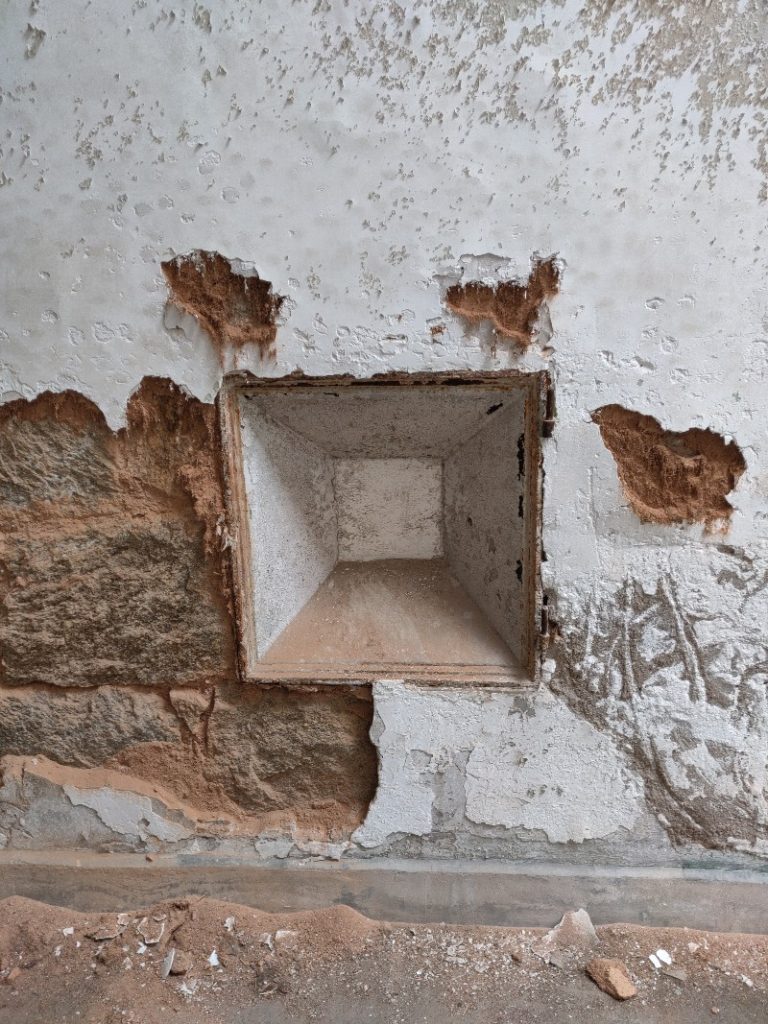
As you can imagine, the isolation (with nothing to do!) and sensory deprivation severely impacted prisoners’ mental health. Our tour guides told us that, once released, inmates experienced steady improvement in their psychological health.
Original feeding hole, through which prisoners received meals
The prison had a hospital wing, which was unusual. Typically, prisons send inmates to an outside hospital for treatment. At ESP, however, prisoners were sent to the hospital wing, staffed by physicians and nurses.
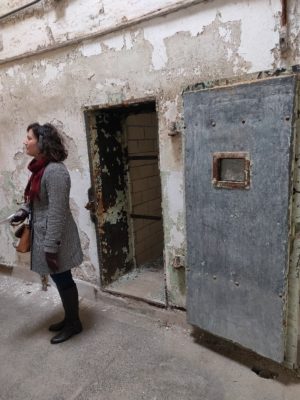
Cell on the prison’s hospital ward
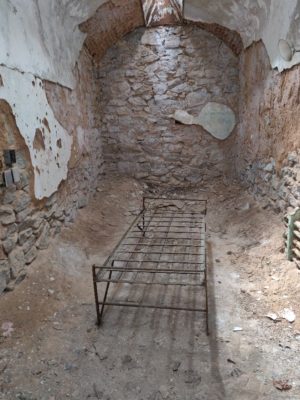
Prison cell
In 1913, the Pennsylvania system, with its confinement and solitude, officially ended at ESP. In 1924, for the first time at ESP, inmates ate together in communal dining halls. The prison was closed in 1970 and, by the mid-1980s, was completely abandoned, until it became the museum that it is today.
Check out more on ESP’s history and timeline of events. When you visit, allot the entire day. ESP hosts a plethora of tours and you will want extra time to meander through the stark halls and read all of the fascinating historical info. And it’s impossible not to get creeped out.
Get helpful writing tips and more
in your inbox
Join the tribe and get free fiction and self-publishing tips.
Thank you for subscribing.
Something went wrong.
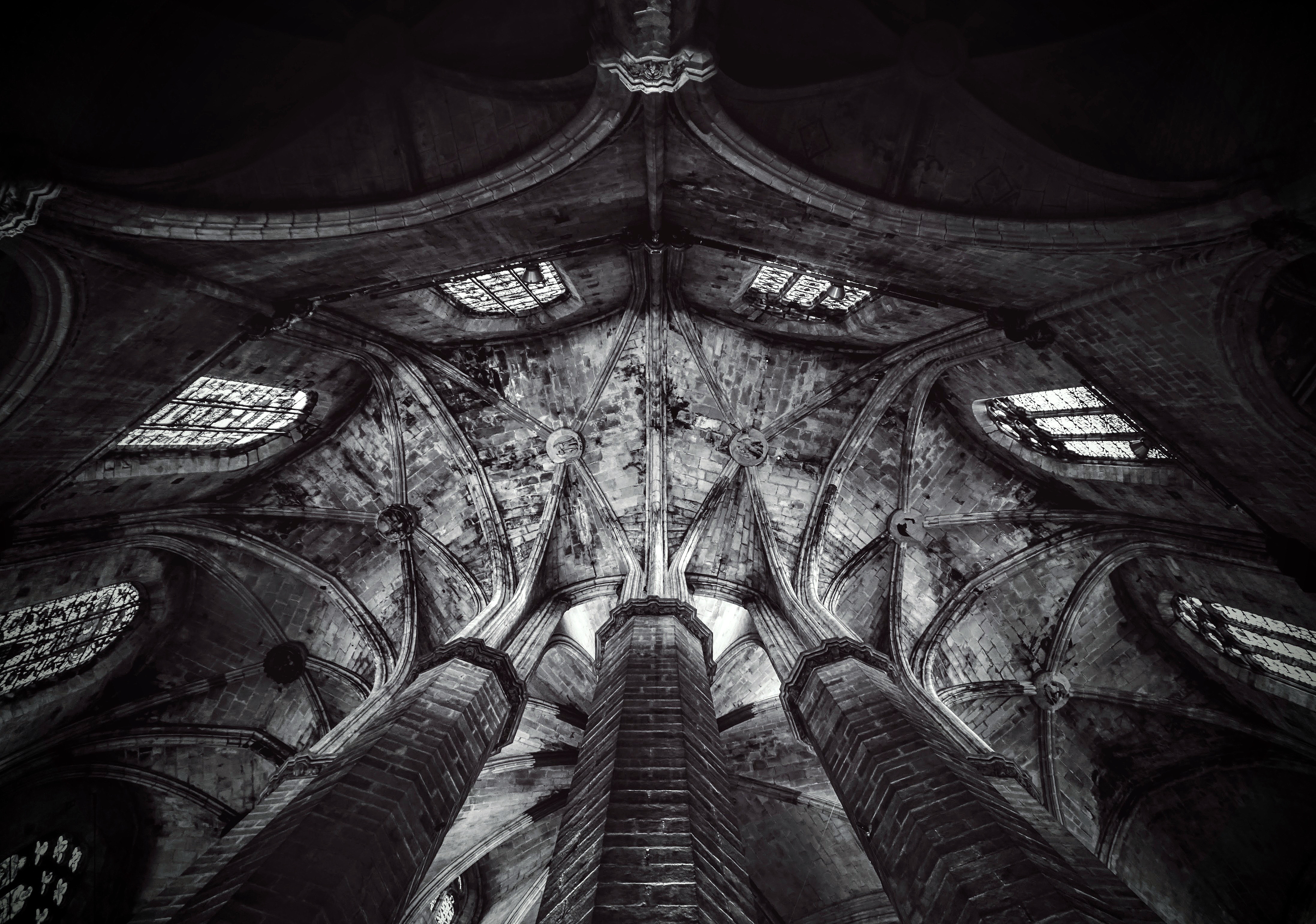
Be First to Comment